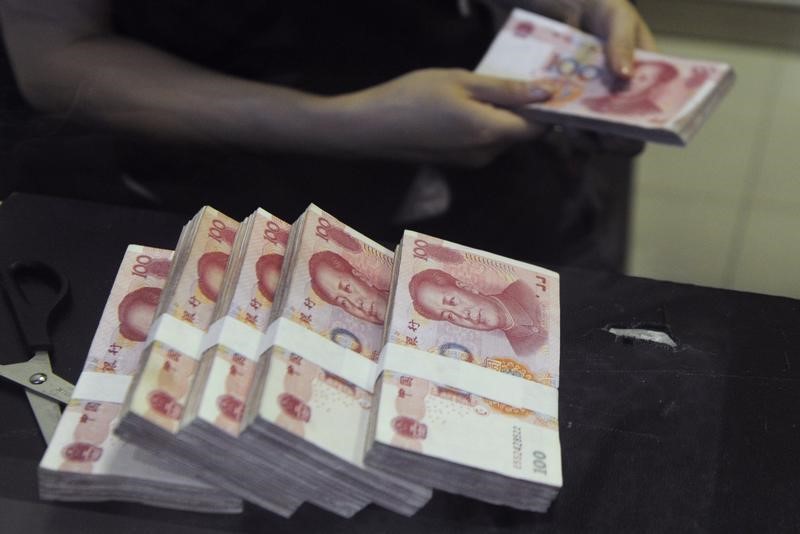 © Reuters. Most Central Banks Haven’t Been Shifting Reserves Into Yuan
© Reuters. Most Central Banks Haven’t Been Shifting Reserves Into Yuan(Bloomberg) — Only a minority of central banks shifted their foreign-exchange reserves into yuan in the past year, according to a survey by UBS Asset Management.
The Chinese currency, along with the euro, did see the biggest gains in allocations by central banks in 2017, according to the survey, conducted by the investment firm in the first half of 2018. Yet just one-quarter of respondents said they had significantly boosted the yuan share of their holdings during in the last year. The U.S. dollar remains “the default currency to invest new reserves” in, UBS Asset said.
China has steadily opened its domestic markets to overseas investors in recent years, and observers say that the record inflow of foreign funds into its bonds reflects in part central bank diversification. Those flows continued even during the yuan’s drop in June. Survey respondents cited a number of remaining challenges, however, including clarity about regulations and concerns about the trading infrastructure.
The average long-term targeted allocation for the yuan was 3.2 percent among survey respondents. IMF data show the yuan’s share of global reserves for which allocations have been identified was 1.4 percent at the end of March. The Japanese yen’s current share, by comparison, was 4.8 percent. UBS said its survey had responses from close to 30 central banks and sovereign wealth funds across the globe, without specifying them.
Goldman Sachs Group Inc (NYSE:). sees the yuan on the rise as a reserve currency, though staying below the pound and yen — read about that here.
Among other findings in the survey:
- The average share of U.S. dollar holdings among survey participants was 71.5 percent, against the 62.5 percent share of global reserves for which allocations have been identified in data compiled by the International Monetary Fund.
- An 87 percent majority of central banks surveyed viewed their reserves as adequate, and 52 percent said they had increased their holdings over the previous 12 months.
- A net 10 percent had added to their share of euros during the last year, while 5 percent had boosted the Norwegian krone allocation significantly.
- Some 54 percent of the respondents said they were concerned about elevated asset-price valuations with regard to the investment of reserves, and half fretted about rising U.S. interest rates, while 42 percent were worried about low and negative yields in fixed income.
- A majority of central banks surveyed said they are diversifying beyond government bonds.
- Sixty percent predicted that cryptocurrencies won’t be a part of central bank reserves in the coming decade. Only 12 percent anticipate that outcome, while 28 percent said it would take longer than 10 years.
- Remaining challenges for investing or considering buying yuan cited by respondents include concerns about China’s capital-account restrictions, liquidity and clarity on rules to access onshore investments.
(Adds reference to drop in yuan in third paragraph.)
Fusion Media or anyone involved with Fusion Media will not accept any liability for loss or damage as a result of reliance on the information including data, quotes, charts and buy/sell signals contained within this website. Please be fully informed regarding the risks and costs associated with trading the financial markets, it is one of the riskiest investment forms possible.
Source: Investing.com





























